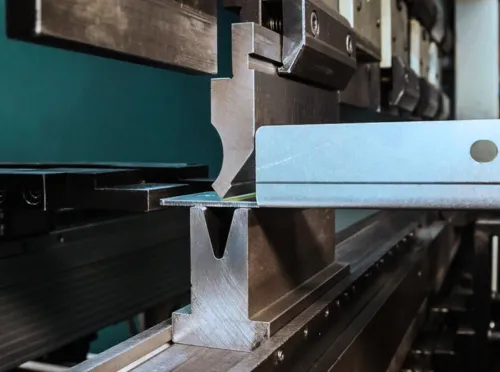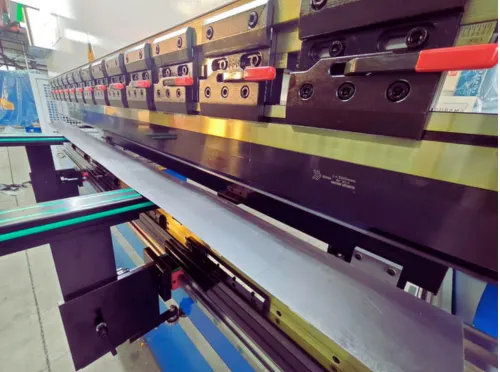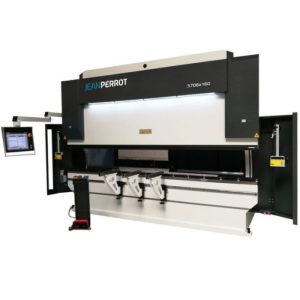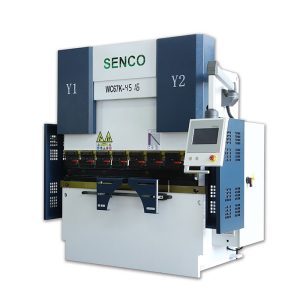Overview
A press brake is a machine used for bending sheet metal and plate materials with high precision. It is widely utilized in industries such as metal fabrication, automotive, aerospace, and construction due to its ability to create complex bends with consistent accuracy. Modern press brakes incorporate hydraulic, mechanical, and CNC-controlled systems, enhancing efficiency and repeatability in industrial applications.
How It Works
A press brake operates by pressing a punch into a die, deforming the metal into the desired shape. The machine applies force using hydraulic, mechanical, or electric mechanisms, ensuring precision bending. Key factors influencing the bending process include:
Tonnage – Determines the maximum force the press brake can exert.
Bend Angle – Controlled by the depth of the punch into the die.
Material Thickness – Affects the force and tooling required.
Bend Length – Dictates the size of the metal sheet that can be processed.

Types of Bending Methods:
Air Bending – The punch does not fully press the material into the die, allowing flexible angle adjustments.
Bottoming (Coining) – The material is fully pressed into the die, creating precise and permanent bends.
Wipe Bending – Uses a wiping die to form complex edge bends.

Advantages of Press Brakes
High Precision – CNC-controlled models allow repeatable accuracy for complex parts.
Versatility – Capable of forming a wide range of materials including steel, aluminum, and titanium.
Increased Efficiency – Faster bending speeds compared to manual methods.
Reduced Material Waste – Optimized bending sequences minimize scrap production.
Minimal Tool Wear – Hydraulic and electric models experience less mechanical stress.
Types of Press Brakes
Hydraulic Press Brakes
Uses hydraulic cylinders for controlled force application.
Provides high tonnage capacity for thick metal sheets.
Ideal for heavy-duty industrial applications.
Mechanical Press Brakes
Uses a flywheel and clutch system to generate force.
Known for fast cycle times and high energy efficiency.
Suitable for high-speed production but less flexible than hydraulic models.
Electric Press Brakes
Uses servo motors for extreme precision and energy efficiency.
Provides lower operational costs and quiet operation.
Ideal for small to medium-sized sheet metal bending.
CNC Press Brakes
Computer-controlled system for automated bending sequences.
Ensures high repeatability and minimizes operator error.
Best for complex, multi-bend parts in mass production.

Comparison with Other Metal Bending Techniques
| Press Brake | Roll Bending | Folding Machines | |
|---|---|---|---|
| Precision | High (CNC-controlled) | Moderate | High |
| Material Range | Wide (Thick & Thin Metals) | Primarily Thin Sheets | Thin to Medium Sheets |
| Setup Time | Moderate | Low | High |
| Cost Efficiency | High for Mass Production | Low for Large Sheets | Moderate |
Challenges & Solutions
| Challenge | Solution |
|---|---|
| Springback (Material Rebounds) | Adjust tonnage and bend angle compensation |
| Bend Angle Variations | Use CNC controls and back gauges for consistency |
| Tool Wear | Regular die and punch maintenance |
| Material Warping | Optimize force application and use multi-step bending |
| Alignment Issues | Ensure proper calibration and operator training |
Applications Across Industries
Automotive – Manufacturing body panels, brackets, and chassis components.
Aerospace – Fabrication of lightweight aluminum and titanium structures.
Construction – Producing beams, frames, and structural reinforcements.
Metal Fabrication – Crafting custom enclosures, signage, and furniture.
Electronics – Forming metal casings for circuit boards and electrical cabinets.
Press brake Products
Looking for Reliable Industrial Solutions?
Boost Your Production with Soha Group
Laser Cutting | Laser Welding | Press Brakes | Guillotine cutter




